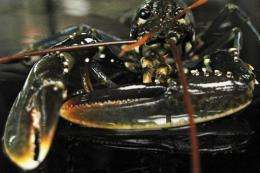Central American shrimp, lobster fast disappearing

Illegal fishing and climate change are decimating shrimp and lobster populations in Central America, threatening a two-billion-dollar industry and 136,000 jobs, regional experts said Thursday.
"Pollution and warmer waters are impacting our species," especially shrimp and lobster, said Central American Organization of the Fisheries and Aquaculture Sectors (OSPESCA) regional director Mario Gonzalez.
"The Pacific shrimp population, Panama excluded, has fallen dramatically" because of overexploitation and decreasing rainfall in Central America over the past decade, "which depletes the nutrients they feed on," the expert said.
The lobster population is also in jeopardy of disappearing altogether, he added.
Illegal fishing is also taking its toll, Gonzalez said.
"Of the total amount delivered to fish processing plants, approximately 20 to 30 percent is illegal or undersized," said the OSPESCA official.
Underreported catches compound the problem, Gonzalez said.
"You can say that in Central America 50 percent of our (fishing) production goes undeclared or not reported, not only by private fishermen but also by large fisheries," the expert said.
The dire situation has been brought to the attention of regional governments.
"There's a regional policy (on fishing), but it's just included in documents which have to be turned into action in order to better manage our fish stocks," OSPESCA interim president Diana Arauz told AFP.
As a first step, officials said, Central American Integration System members -- El Salvador, Honduras, Nicaragua, Guatemala, Costa Rica and Panama -- have recently banned lobster fishing from March 1 to June 30 in hopes the species can make a comeback.
Lobster and shrimp fishing in Central America employs some 136,000 people and brings in 1.985 billion dollars a year -- 4.1 percent of the regional gross domestic product, OSPESCA and the UN Food and Agriculture Organization said in a report.
(c) 2010 AFP












